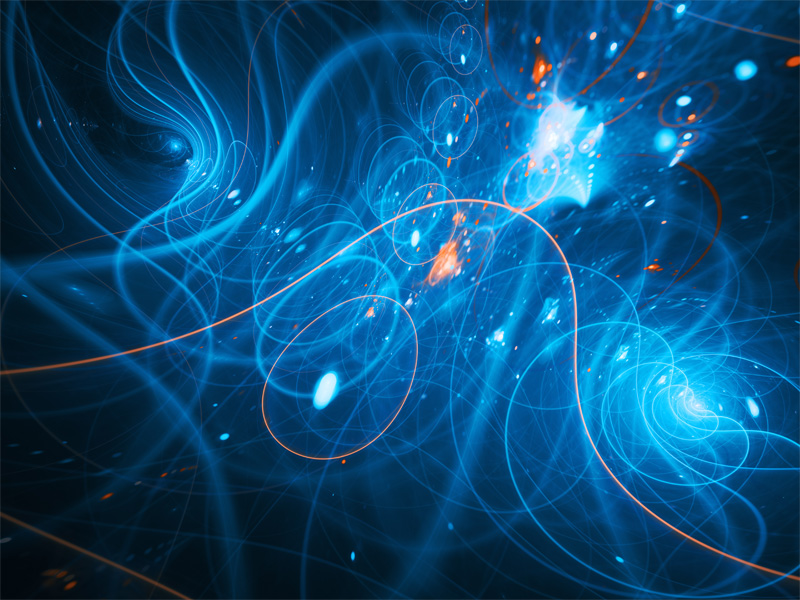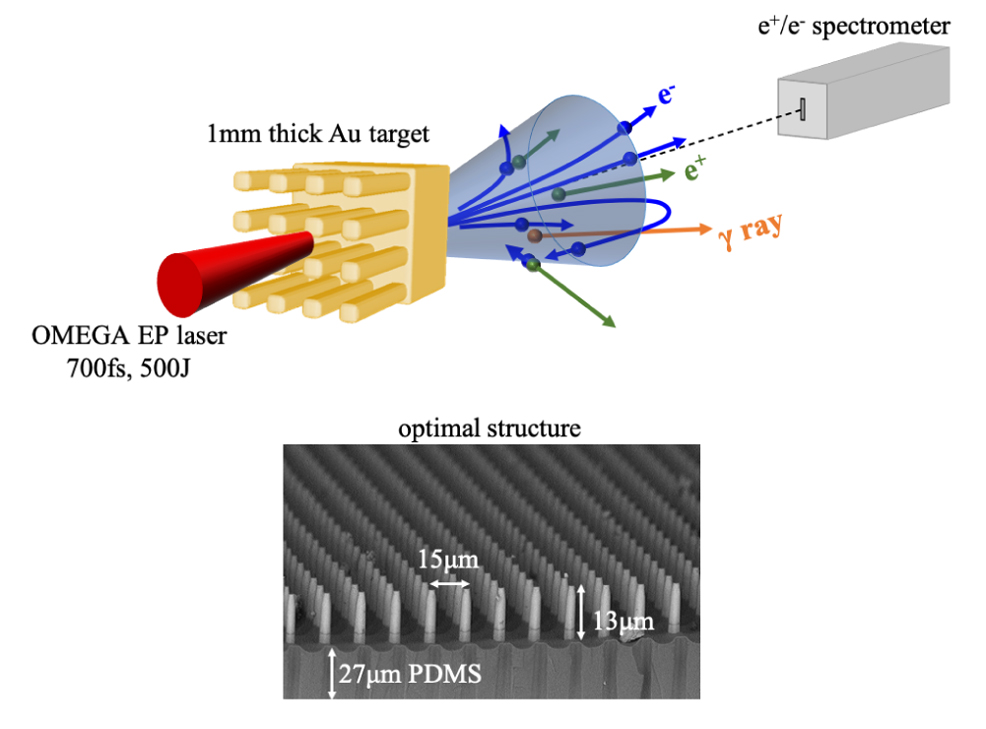
13th March 2021 Doubling of antimatter created in the laboratory Scientists have achieved a breakthrough in the production of antimatter in the laboratory, with a near 100% increase.
Scientists from Lawrence Livermore National Laboratory (LLNL) have succeeded in almost doubling the current record of 100 billion antimatter particles created in the laboratory. As illustrated below, the team used targets with microstructures on an interface, and a high-intensity laser being shot through. Their study appears in the journal Applied Physics Letters. "These successful experimental results are important for the Livermore positron project, whose grand goal is to make enough electron-positron antimatter to study the physics of gamma-ray bursts," said Hui Chen, project lead and a co-author of the paper. "But we found that the experiments also created a high energy (MeV) X-ray backlighter that can penetrate very dense objects, which is important for many aspects of high energy density science." When enough energy is squeezed into a very small space, such as during high-energy particle collisions, particle-antiparticle pairs are produced spontaneously. When energy transforms into mass, both matter and antimatter are created in equal amounts. In these experiments, intense laser-plasma interactions produce very high energy electrons whose energy, when interacting with the gold target, can generate electron-positron pairs. The researchers used previous results and new simulations to design micro-structures, which could either enhance or diminish this interaction, leading to enhanced or suppressed positron generation relative to the previous state of the art.
"The agreement between the simulations and the experiment is remarkable, giving us confidence that we're capturing the most important physical mechanisms," said co-author Anthony Link. The ability to create so much antimatter in a small laboratory opens the door to new avenues of research – including a better understanding of the physics underlying various astrophysical phenomena such as black holes and gamma-ray bursts, as well as a pathway toward a dense electron-positron plasma. "Adding front surface micro-structures to the typical gold target constitutes a cost-effective approach to substantially increase the positron yield while keeping the same laser conditions," explained Jiang Sheng, lead author. "It is one step further toward using laser-generated positron sources for the variety of applications." In the more distant future, antimatter could be an incredibly useful source of energy. Space travel is one area that might be revolutionised, with antimatter-based propulsion having billions of times the energy density of chemical reactions such as hydrogen and oxygen combustion. A trip to Jupiter, for example, could be achieved in just four months using a single gram of anti-protons.
Comments »
If you enjoyed this article, please consider sharing it:
|








